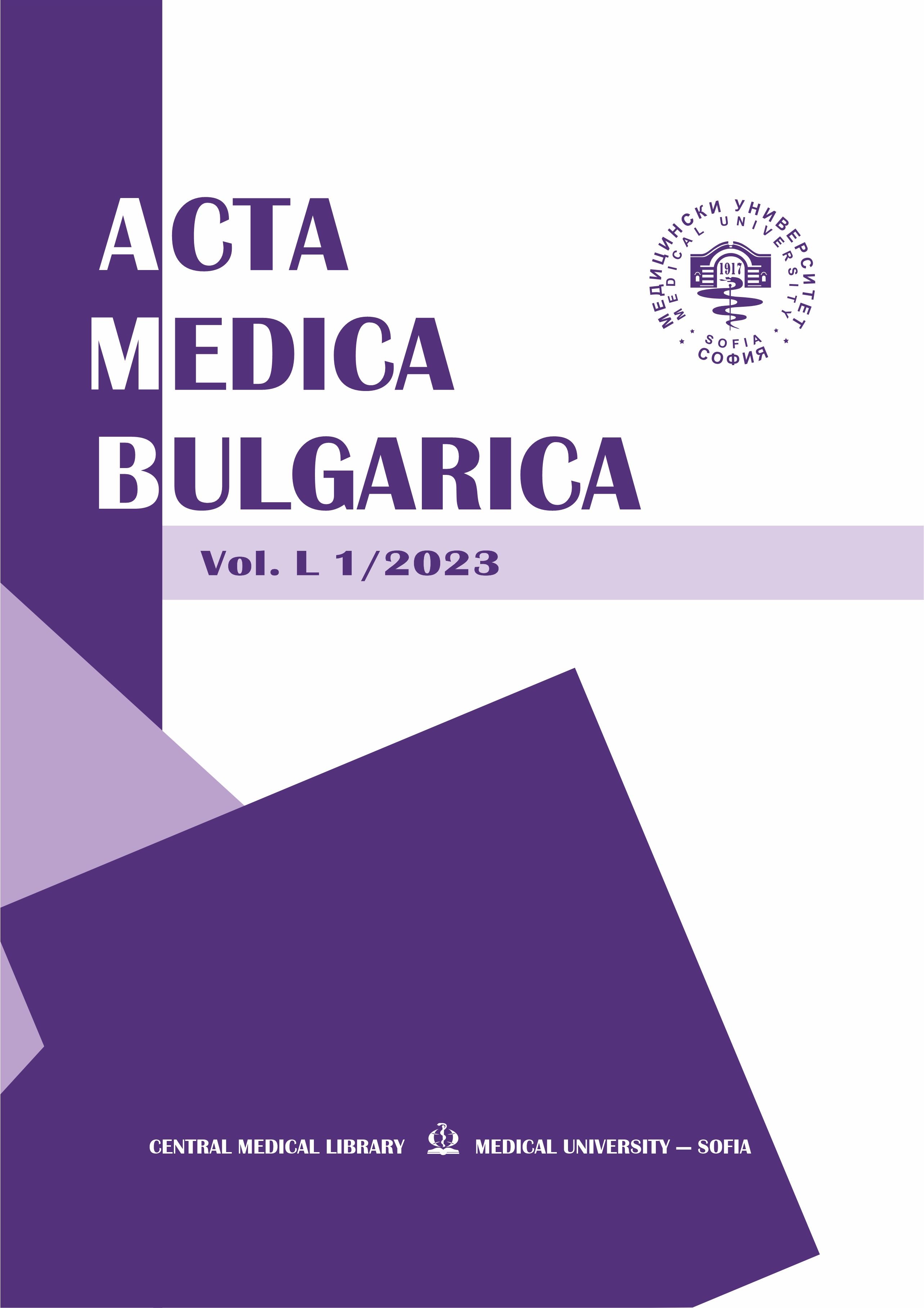Indocyanine Green Fluorescence for Liver Assessment and Imaging-Guided Resection of Colorectal Metastases: A Case Report
DOI:
https://doi.org/10.2478/AMB-2023-0008Keywords:
liver resection, ICG fluorescence image-guided surgery, liver metastasis, liver function, ICGR15Abstract
Introduction
Liver resection is widely accepted as a treatment option for primary liver cancer and metastases. The goal of surgery is to resect all tumours with negative histological margins while preserving sufficient functional hepatic parenchyma and reducing postoperative complications. The use of Indocyanine green (ICG) for liver function assessment and fluorescence image-guided surgery could be used to achieve that goal.
Clinical Case Description
We present the case of a 62-year-old female patient with diagnosed sigmoid colon cancer with four bilobar liver metastases who underwent a simultaneous sigmoid resection and ICG fluorescence image-guided liver resection 3 days after preoperative ICG liver function assessment. We decided to perform liver-sparing resection having in mind the liver metastases’ number, size and location and the slightly impaired liver function (ICG retention rate 15 – ICGR15 was 14,02%). All liver tumours were removed without complications, and the resected margins were all microscopically free of tumour tissue (R0 resection). The postoperative period was uneventful, without any signs of postoperative liver failure.
Conclusions
ICGR15 can be considered a safe and informative marker for liver function and indirectly for the degree of portal hypertension. ICG fluorescence provides an additional method to assist intra-operative tumour identification. The best timing of injection requires further study.
References
Marino MV, Di Saverio S, Podda M et al. The Application of Indocyanine Green Fluorescence Imaging During Robotic Liver Resection: A Case-Matched Study. World J Surg. 2019;43(10):2595-606.
Kim HJ, Kim CY, Park EK, et al. Volumetric analysis and indocyanine green retention rate at 15 min as predictors of post-hepatectomy liver failure. HPB (Oxford). 2015;17: 159-67.
De Gasperi A, Mazza E, Prosperi M. Indocyanine green kinetics to assess liver function: Ready for a clinical dynamic assessment in major liver surgery? World J Hepatol. 2016;8(7): 355-67.
Vos JJ, Wietasch JK, Absalom AR et al. Green light for liver function monitoring using indocyanine green? An overview of current clinical applications. Anaesthesia. 2014;69:1364-76.
Ishizawa T, Fukushima N, Shibahara J et al. Real-time identification of liver cancers by using indocyanine green fluorescent imaging. Cancer 2009;115:2491-504.
Kang CH, Chen IS. Indocyanine green fluorescence imaging-guided resection of colorectal liver metastasis. J Cancer Res Pract. 2021;8:109-12.
Wakabayashi T, Cacciaguerra AB, Abe Y et al. Indocyanine Green Fluorescence Navigation in Liver Surgery: A Systematic Review on Dose and Timing of Administration. Ann Surg. 2022;275(6):1025-1034.
Tsim NC, Frampton AE, Habib NA, Jiao LR. Surgical treatment for liver cancer. World J Gastroenterol 2010;16(8): 927-933.
Poultsides GA, Schulick RD, Pawlik TM. Hepatic resection for colorectal metastases: the impact of surgical margin status on outcome. HPB (Oxford). 2010;12(1):43-9.
Nakaseko Y, Ishizawa T, Saiura A. Fluorescence-guided surgery for liver tumors. J Surg Oncol. 2018;118:324-31.
Lisotti A, Azzaroli F, Buonfiglioli F et al. Indocyanine green retention test as a non-invasive marker of portal hypertension and esophageal varices in compensated liver cirrhosis. Hepatology. 2014;59:643-650.
Mizuguchi T, Kawamoto M, Meguro M, et al. Preoperative liver function assessments to estimate the prognosis and safety of liver resections. Surg Today. 2014;44:1-10.
Seyama Y, Kokudo N. Assessment of liver function for safe hepatic resection. Hepatol Res. 2009;39:107-116.
Kokudo N, Makuuchi M. Evidence-based clinical practice guidelines for hepatocellular carcinoma in Japan: the J-HCC guidelines. J Gastroenterol 2009;44 Suppl 19:119-121.
Imamura H, Sano K, Sugawara Y et al. Assessment of hepatic reserve for indication of hepatic resection: decision tree incorporating indocyanine green test. J Hepatobiliary Pancreat Surg. 2005;12:16-22.
Yau T, Tang VYF, Yao TJ et al. Development of Hong Kong liver cancer staging system with treatment stratification for patients with hepatocellular carcinoma. Gastroenterology. 2014;146:1691-700.e3.
Nowicki TK, Markiet K, Szurowska E. Diagnostic Imaging of Hepatocellular Carcinoma – A Pictorial Essay. Curr Med Imaging Rev. 2017;13(2):140-53.
Purich K, Dang JT, Poonja A et al. Intraoperative fluorescence imaging with indocyanine green in hepatic resection for malignancy: a systematic review and meta-analysis of diagnostic test accuracy studies. Surg Endosc. 2020;34(7):2891-903.
Boogerd LS, Handgraaf HJ, Lam HD et al. Laparoscopic detection and resection of occult liver tumors of multiple cancer types using real-time near-infrared fluorescence guidance. Surg Endosc. 2017;31(2):952-961.
Mehdorn AS, Beckmann JH, Braun F, et al. Usability of indocyanine green in robot-assisted hepatic surgery. J Clin Med. 2021;10:456.
Downloads
Published
Issue
Section
License
Copyright (c) 2023 Acta Medica Bulgarica

This work is licensed under a Creative Commons Attribution-NonCommercial-NoDerivatives 4.0 International License.
You are free to share, copy and redistribute the material in any medium or format under these terms.


 Journal Acta Medica Bulgarica
Journal Acta Medica Bulgarica 